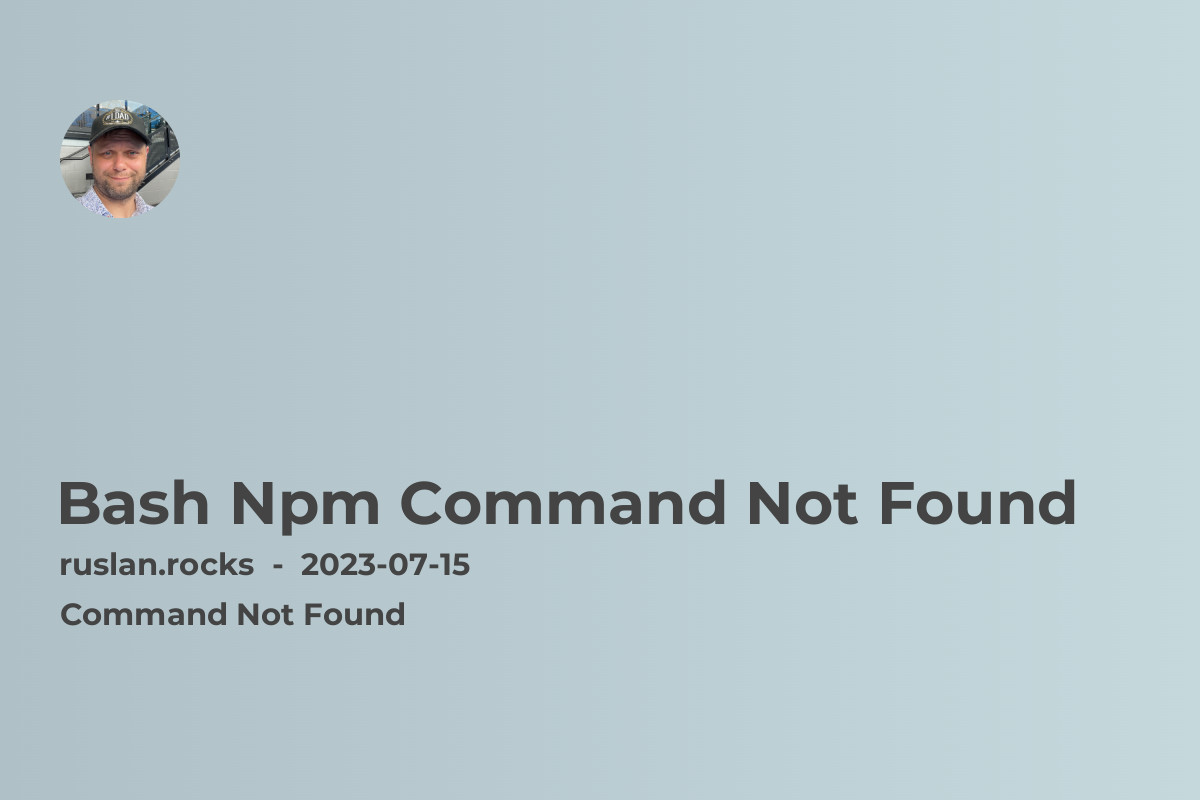
If you are a developer working with Node.js, chances are you have encountered the dreaded "bash: npm: command not found" error. This error occurs when the npm command is not recognized by the Bash shell. In this article, we will explore the common causes of this issue and provide solutions to help you get npm up and running again.
Understanding the Problem
After installing Node.js, you might expect that the npm command would be available by default. However, in certain cases, you may encounter the "bash: npm: command not found" error when you try to run npm commands. This error typically indicates that the system cannot locate the npm executable.
Possible Causes
1. Incorrect Installation
One possible cause of the "bash: npm: command not found" error is an incorrect installation of Node.js. During the installation process, it is important to ensure that the "npm" package is included. If it is not selected, npm will not be installed along with Node.js.
2. Path Configuration Issue
Another common cause is an incorrect configuration of the system's environment variables, specifically the PATH variable. The PATH variable contains a list of directories in which the system looks for executable files. If the directory containing the npm executable is not included in the PATH variable, Bash will not be able to find it.
Resolving the Issue
1. Reinstall Node.js
If you suspect that the npm installation was skipped or not installed correctly, the simplest solution is to reinstall Node.js with the npm package included. Make sure to select the option to install npm during the installation process.
2. Verify the Installation
After reinstalling, you can verify that npm is correctly installed by running the following command in your terminal:
npm --version
If the command returns the version number of npm, then the installation was successful.
3. Check the PATH Variable
If the issue persists, you should check the configuration of your system's PATH variable. To do this, open your terminal and run the following command:
echo $PATH
This will display the list of directories included in your PATH variable. Verify that the directory containing the npm executable is included. If it is not, you will need to add it to the PATH variable.
4. Adding the Directory to PATH
To add the directory containing the npm executable to the PATH variable, open your terminal and open the .bashrc or .bash_profile file in a text editor. Add the following line at the end of the file:
export PATH="$PATH:/path/to/npm/directory"
Replace /path/to/npm/directory with the actual directory path where npm is installed on your system. Save the file and then run the following command in your terminal to apply the changes:
source ~/.bashrc
or
source ~/.bash_profile
5. Restart Your Terminal
Sometimes, changes to environment variables may not take effect immediately. In such cases, simply closing and reopening your terminal window can solve the "bash: npm: command not found" error.
Related Articles
To further explore topics related to command not found errors, you may find the following articles helpful:
- Bash Command Not Found: Offers solutions to common "command not found" errors in the Bash shell.
- bash: docker: command not found: Focuses on troubleshooting and fixes for the "bash: docker: command not found" error.
- sudo: easy_install: command not found: Provides solutions for the "sudo: easy_install: command not found" error.
- bash: aws: command not found: Explores solutions to the "bash: aws: command not found" error in the AWS command-line interface.
- npm command not found mac: Addresses the "npm command not found" issue specifically on macOS systems.
By referring to these related articles, you can broaden your knowledge and troubleshoot similar issues that you may encounter in your development journey.
In conclusion, the "bash: npm: command not found" error can be frustrating, but with the proper troubleshooting steps outlined in this article, you can resolve the issue and get back to developing with Node.js. Remember to double-check your installation, verify the PATH variable, and refer to related articles for additional guidance. Happy coding!
